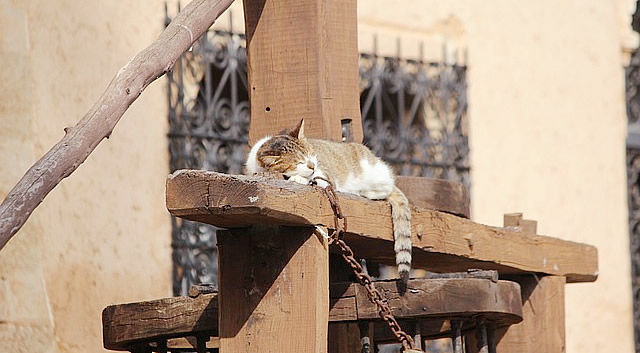先日から「Should New Zealand cats be kept indoors? -「ニュージーランドの猫は室内で飼うべき?」を読んでいます。

・「ニュージーランドの猫は室内で飼うべき?」(1)
・「ニュージーランドの猫は室内で飼うべき?」(2)
・「ニュージーランドの猫は室内で飼うべき?」(3)
・「ニュージーランドの猫は室内で飼うべき?」(4)
・「ニュージーランドの猫は室内で飼うべき?」(5)
New Zealand’s birds are particularly vulnerable to cat predation, says Jessi Morgan, the chief executive of the conservation group Predator Free New Zealand Trust.
ニュージーランドの鳥類は特に猫の捕食に弱い、と語るのは、自然保護団体Predator Free New Zealand Trustのジェシ・モーガン氏。
Many are flightless, they nest and fledge on the ground and some exude a strong, mammal-like odour which cats can pick up.
多くは飛べず、地上で巣を作って羽化する上に、哺乳類に似た強い臭いを放つ種がおり、猫はそれを嗅ぎつける。
fledge「羽毛が生えそろう、巣立ちができる」。
“Cats are apex predators here,” she says.
「猫はここでは頂点捕食者なのです」と彼女。
apex predator「頂点捕食者(自身は捕食されない生態ピラミッドの頂点にある種)。」。
Morgan recently hiked along one of New Zealand’s most popular – but remote – hiking tracks, the Milford Trek, and was surprised to spot cats roaming there too.
同氏は最近、国内で最も人気のある、しかし人里離れたハイキングコース、ミルフォード・トレックを歩いたが、そこでも猫が歩き回っているのに驚いたという。
“We had to get there by boat, and the only way a cat could get there is over this huge pass,” she says.
「そこは船でしか行けず、猫がそこにたどり着くには巨大な峠を越えるしかない場所です」と彼女。
“It’s quite terrifying to see them in this environment.”
「そんな環境で猫たちを見るのは非常に恐ろしいことです。」
The effect cats have isn’t just limited to predation – the recent boom in feral cat populations is even being felt in New Zealand’s marine environment.
猫がもたらす影響は捕食だけにとどまらず、近年の彼らの勢いは、この国の海洋環境にも及んでいる。
Toxiplasma, or toxo, is a parasite carried by feral cats which has been implicated in the deaths of some of New Zealand’s indigenous dolphin species, Geary says.
トキソプラズマは野良猫が宿す寄生虫で、ニュージーランドの固有種のイルカの死亡に関与しているとギアリー氏は指摘。
“They are indirectly impacting our endangered dolphins, Maui and Hector’s dolphins, because they are washing up on the beach infested with toxoplasmosis and the only host of toxo is cats.
「トキソプラズマ症に感染したイルカが浜辺に打ち上げられており、トキソの唯一の宿主は猫ですから、絶滅の危機にあるマウイ島やヘクター島のイルカに間接的な影響を与えていることが分かります。
The oocysts of toxoplasmosis can be dormant in the soil for years.”
トキソプラズマ症のオーシストは、土の中で何年も休眠していることがあるのです。」
oocyst「オーシスト(休止状態にあるが、宿主に取り入れられると増殖を始める接合子嚢・胞嚢体)」。
If a cat defecates near a stream which then floods, the cysts can be swept out to sea.
猫が小川の近くで排泄し、その小川が氾濫すると、その包嚢が海に流されることがある。
なるほど・・・猫が自然界のどこかで排泄し、それが流れ流れて海に出ると、海の生き物にも影響を及ぼしてしまうと。
しかしトキソの細胞?が、何年も土の中で休眠しうるとは恐るべき話。
妊婦さんは特に気を付けるように注意喚起されていますが、場合によっては何年も生き続けているなんて、ちょっとゾッとする話だと思いました。
猫はとっても可愛いんですけどね・・・。
理由は単純明快!「少ないコストでしっかり楽しく学べるから」。
私自身の経験(高機能でビックリ)をびっしり書いていますので、良かったら読んでみてください。
下のバナーからどうぞ!






